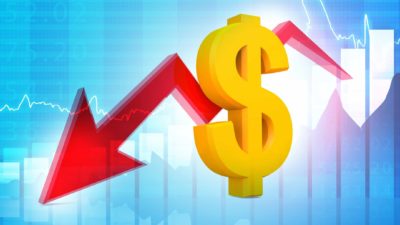It isn't only the risk of recession that ASX share investors need to worry about as the threat of stagflation rears its ugly head.
The aggressive interest rate posture taken by the Reserve Bank of Australia (RBA) yesterday is fuelling speculation about the dreaded 'S' word.
While economists largely agree that a recession here is unlikely thanks to our considerable exposure to commodities, stagflation could be a more likely outcome.
What is stagflation?
Stagflation refers to an environment of persistent high inflation and a stagnant economy with high unemployment.
Fortunately, employment is still strong — but that could change quite quickly. The RBA's 50-basis point (bps) increase to the cash rate and promises of more to come will inevitably slow economic growth. The collateral damage to that outcome is higher unemployment.
High prices and growth headwinds
It isn't only the RBA with its finger on the rate-hike machine-gun trigger. The United States Federal Reserve is also moving quickly to lift rates in the US.
There is a greater chance that the US could slip into a mild recession, defined as two quarters of negative gross domestic product (GDP) growth. Again, this doesn't mean Australia will be dragged into a recession as well, but such an outcome will drag on growth here.
Impact of stagflation on ASX shares
This again lifts the risk of stagflation for us, which will have consequences for ASX shares. Higher costs caused by inflation could squeeze companies. But they'll have limited ability to pass on rising costs to consumers due to the economic malaise.
However, the pain won't be uniformly felt across the board. Some ASX sectors will be impacted more than others. Discretionary retail is one example where sellers have to pay more for goods as consumer spending slows.
Best performing asset class
On the other hand, some ASX shares could benefit from stagflation. These tend to be defensive shares, commodity producers and gold.
A report by Schroders illustrates this point. The wealth manager studied the average real (inflation-adjusted) year-on-year total return of major asset classes since 1973.

While the study was US-centric, it shows the best stagflation performers were gold (+22.1%). The next best performing were commodities (+15.0%), followed by real estate investment trusts (REITs) (+6.5%).
Schroders explains:
This makes sense. Gold is often seen as a safe-haven asset and so tends to appreciate in times of economic uncertainty. Real interest rates also tend to decline in periods of stagflation as inflation expectations rise and growth expectations fall. Lower real rates reduce the opportunity cost of owning a zero-yielding asset such as gold, thereby boosting its appeal to investors.
The ASX shares that may outperform during stagflation
Thankfully for our resources-heavy ASX share market, commodities are also tipped to outperform. Again, this is logical as the source of inflationary pressure comes from raw materials and energy.
However, it's arguably the lowest cost producers that are best placed. This is because demand is likely to slow due to high prices.
Meanwhile, other defensive ASX shares such as REITs are also protected as their rental contracts often include an inflation-linked adjustment allowance.








